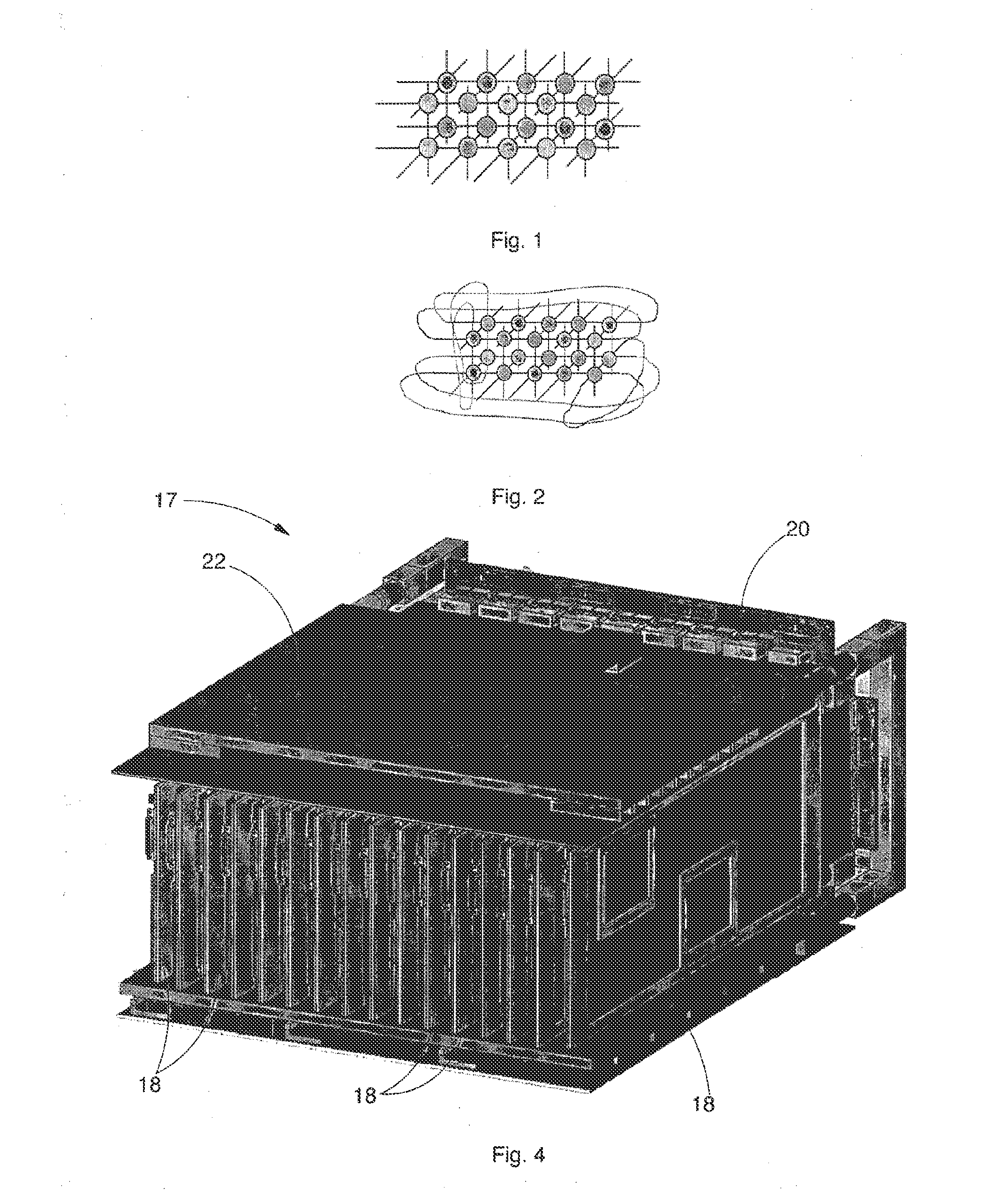Unified network architecture for scalable super-calculus systems
a network architecture and super-calculus technology, applied in the field of unified network architecture for scalable super-calculus systems, can solve problems such as rigidity of these architectures, and achieve the effect of scalable computational capacity and acceptable latency
- Summary
- Abstract
- Description
- Claims
- Application Information
AI Technical Summary
Benefits of technology
Problems solved by technology
Method used
Image
Examples
example
Topology for Single Subrack
[0170]According to one embodiment, a supercomputer is considered represented by a container for electronics (rack 14), having eight sub-containers (subracks 15), divided into sixteen semi-subracks, of which eight are located in front of the rack 14 and eight are located behind the rack 14, near the first 8, in a specular spatial configuration. It is also hypothesized that a semi-subrack houses sixteen calculus nodes 18 interconnected to each other by a backplane 20 and that on the backplane 20 of each semi-subrack there are connectors able to transport the data lines from one backplane to those immediately nearest, therefore, in this specific case, the one that is on the back at the same height, the one that is immediately above (if present), the one that is immediately below (if present), the one that is immediately to the right in a possible adjacent rack, and, in the same way, the one immediately on the left.
[0171]To simplify display, the explanation is...
PUM
 Login to View More
Login to View More Abstract
Description
Claims
Application Information
 Login to View More
Login to View More - R&D
- Intellectual Property
- Life Sciences
- Materials
- Tech Scout
- Unparalleled Data Quality
- Higher Quality Content
- 60% Fewer Hallucinations
Browse by: Latest US Patents, China's latest patents, Technical Efficacy Thesaurus, Application Domain, Technology Topic, Popular Technical Reports.
© 2025 PatSnap. All rights reserved.Legal|Privacy policy|Modern Slavery Act Transparency Statement|Sitemap|About US| Contact US: help@patsnap.com



